In the USSR, feasts were often the only entertainment for Soviet citizens. The generation that found the 1970s remembers well the celebrations of significant dates for the country, which were necessarily accompanied by an abundance of alcohol. Most of the brands of port wines, wines and cognacs have not been produced for a long time, but many recall their taste with nostalgia. Let’s recall Soviet-era alcohol and talk about alternative names for drinks popular among the people.
Drinking culture in the USSR
In the Soviet Union, work began on the culture of consuming alcoholic beverages already in the late 1920s. In the pre-war period, the production of fine wines and champagne was launched at the Crimean factories, and cognac production was actively developing in Armenia. They tried to push vodka popular among the people into the background, which, in the wake of industrialization and the rise in living standards, was quite successful. The construction of new wineries was temporarily interrupted by the war, but already in the 1950s the alcohol industry was fully restored, and technologists of enterprises and employees of research institutes worked on new brands of alcohol.
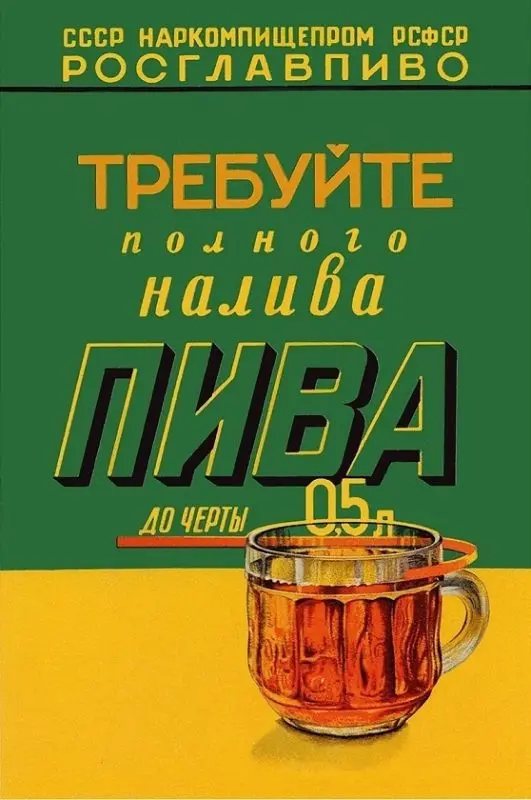
As a result, by 1984, per capita wine consumption in the country was 21 liters. At the same time, they drank much less vodka – 13 liters. Today, the numbers are almost equal – in 2020, the average Russian had 4 liters of wine and 4,9 liters of vodka.
However, one should not equate Soviet citizens with the inhabitants of France, where the culture of wine consumption has been formed for centuries. In the USSR, on the shelves of shops there was cheap and low-quality alcohol, which had little in common with real winemaking. It was these drinks that became the butt of jokes among the people and received humorous nicknames.
Soviet wines
Crimea in Soviet times was one of the major centers of winemaking, however, it was almost impossible for ordinary citizens to buy Massandra’s elite products outside the peninsula – small batches did not hit the shelves and were sorted out by “their own”. Ukraine, Georgia and Moldova became the main suppliers of wines to the regions. Republican factories produced products of good quality, which cannot be said about enterprises that were engaged in bottling imported wine materials. The Soviet buyer, who did not pay attention to the place of production, could find in the bottle both quite worthy wine and a substance that looked more like vinegar.
As a result, a somewhat dismissive attitude was formed towards products from the Union republics, which led to the emergence of alternative names for alcohol. Table vintage wine “Vazisubani” was called “with Vasya to the bath”, although the technology of its production provided for aging for at least one and a half years. Rkatsiteli was the cheapest brand and was called “cancer to the target” among the students, because it was bought and drunk in large quantities due to its low alcohol content.
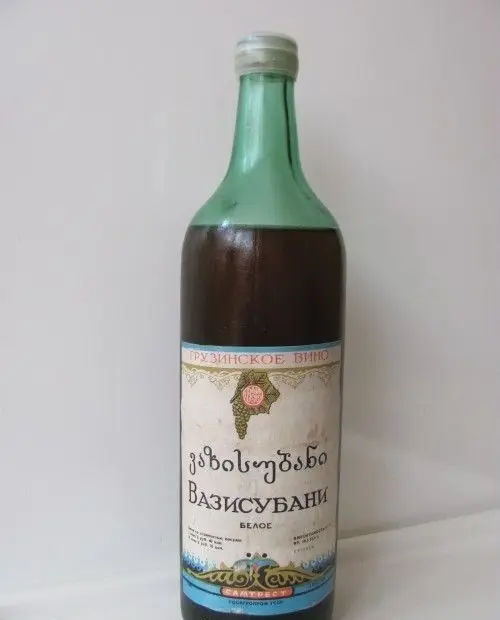
“Alma Valley” was produced in Ukraine, and the people called the drink ink, insecticide or simply HELL. On the Black Sea coast of the Caucasus, “Rose Strong” wine was popular, which was made from a mixture of pink and white wine material with the addition of alcohol. A sweet drink with a strength of 18% was in demand among spa guests, so it was nicknamed “late love” or “husband far away.”
A special category of wines was fruit and berry alcoholic products, which were called “Michurin’s tears” or “talk”. Drinks were made from various fruits: plums, apricots, quince, cherry plums and mountain ash. Wines of this category cost a little more than one ruble, so they were in demand among the hard-drinking part of the population.
History has preserved many funny names for fruit wines:
- “Golden Autumn” – “Zosya” or “fruitful-profitable”;
- “Popular” – “alkonaut’s dream”;
- “Vermouth” – “Vera Mikhailovna”;
- «Apple» – «оболтус».
Often such products were made from concentrated juice, alcohol, water and dyes. Due to low-quality ingredients, the drinks were hazardous to health – in particular, Blackberry wine contained oxalic acid, which corrodes the stomach. The production of “talk” was curtailed only with the beginning of the anti-alcohol campaign.
Port wines
Soviet alcohol called “port wine” did not bear much resemblance to the noble Portuguese original, aged in barrels. Although the alcohol industry produced high-quality brands “Derbent”, “White Tomai”, “Kizlyar” and “Livadia” according to classical technology, they were not popular.
At the same time, cheap surrogates made from wine materials mixed with alcohol and sugar were called ports. The people’s favorite “portyusha” was massively consumed at the holidays, because because of the high fortress it intoxicated no worse than vodka.
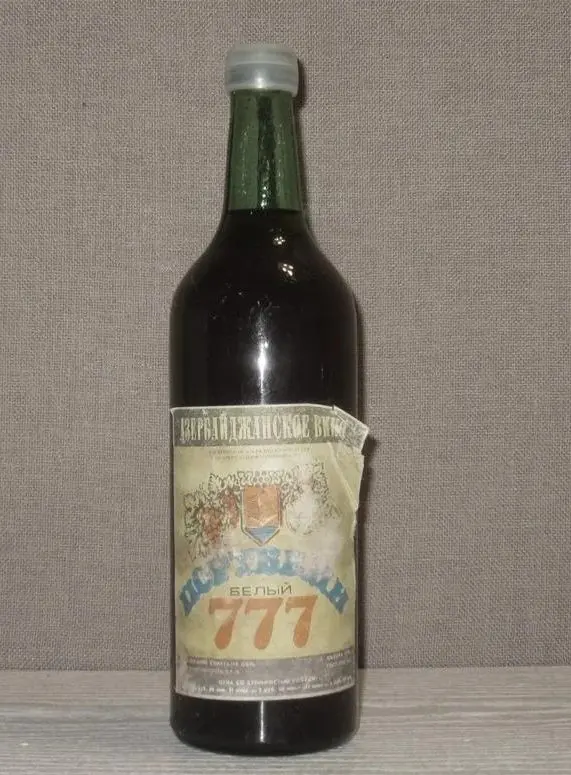
Famous brands:
- “Solntsedar” or “polish” was made by the Gelendzhik winery from Algerian wine materials, which were brought to the USSR by tankers. The drink caused severe poisoning up to death;
- “777” or “three axes”, “point” – fortified unaged wine, which has nothing to do with port wine;
- “Bile mіtsne” or “biomycin” is a product of the Vinnytsia plant that costs only 90 kopecks per bottle, which often did not have the “wine” label.
All drinks tasted bad and caused severe hangovers. Soviet “port wine” was bottled in many catering establishments, it could be drunk in wine glasses, dumplings and sandwich shops, which was used in the morning by those suffering from immoderate evening libations. Despite the low quality of the vast majority of brands, in the USSR, cheap port became part of the culture, it was often mentioned in the literature of that era. For those who caught the 1970s, the names “Agdam”, “Akstafa” and “Surozh” still evoke nostalgia.
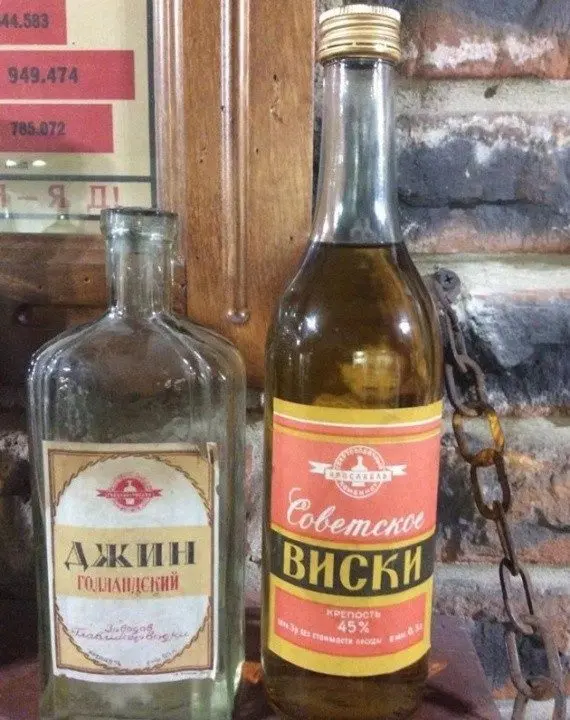
Vodka
Comic names for vodka were given much less often. In 1972, the cheapest brand at that time came out with a cost of just over two rubles. The people called it the “crankshaft” due to the peculiar arrangement of the letters on the label, resembling a part of the mechanism.
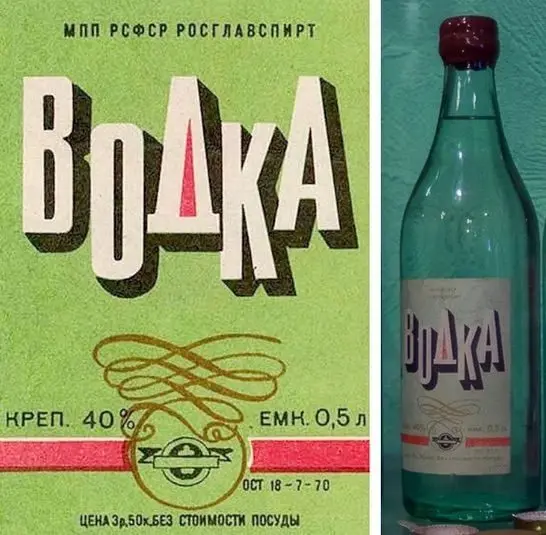
Under Yuri Andropov, the Andropovka went on sale, which cost 4 rubles 70 kopecks. The General Secretary was a supporter of cheap alcohol and therefore ordered the release of new vodka at a low price.
The ingenuity of the people in the comic names of alcohol is explained by a small assortment. There were few stamps, and they were well known to almost the entire adult population, which gave room for imagination. As soon as floods of imported spirits poured into the country, alcoholic folklore became a story that only the older generation remembers today.










